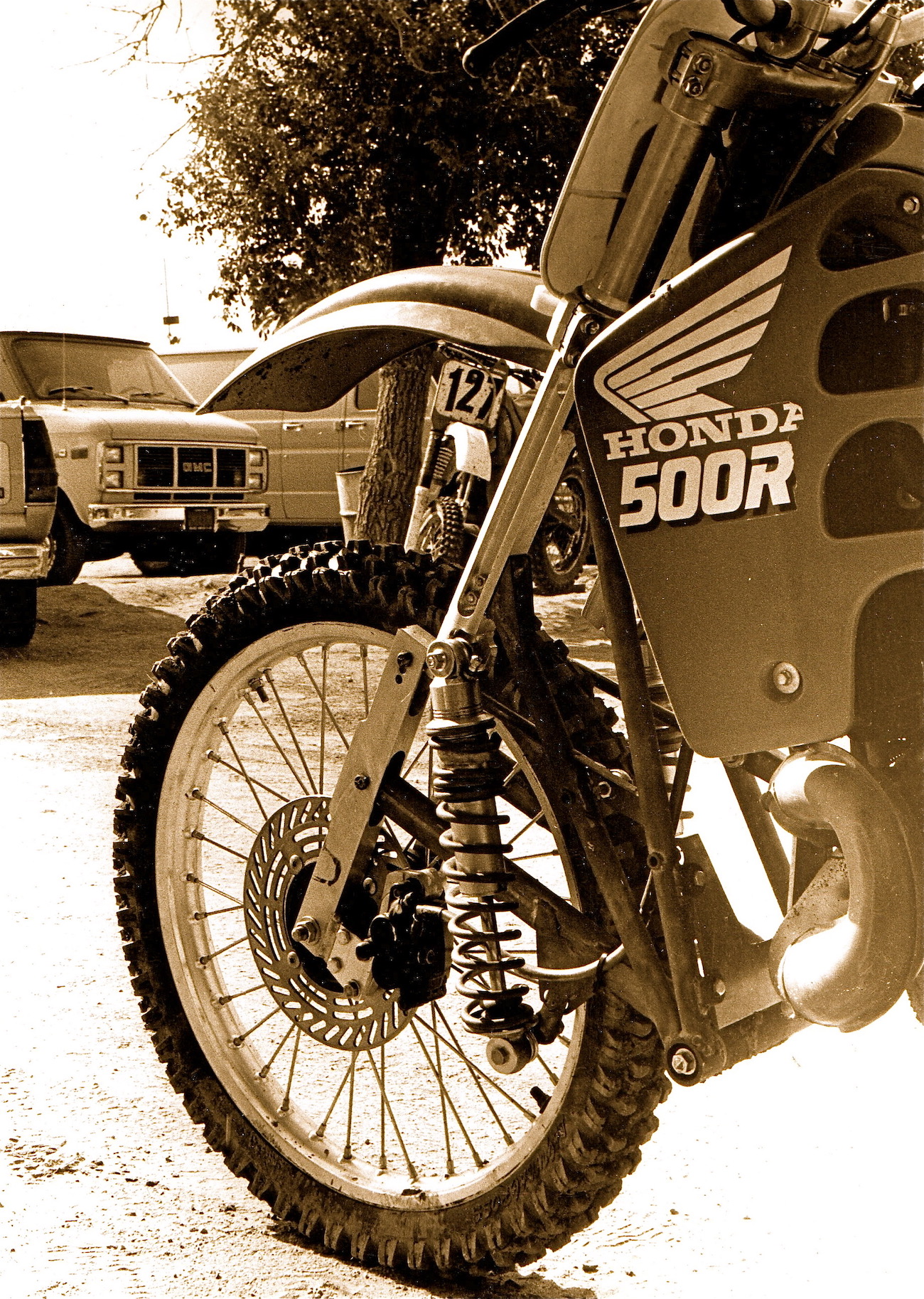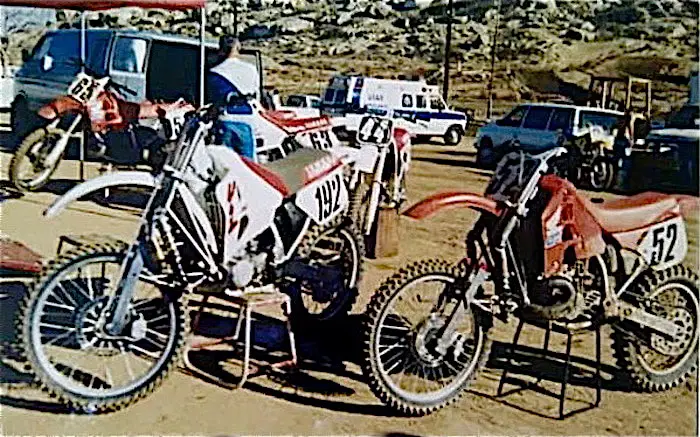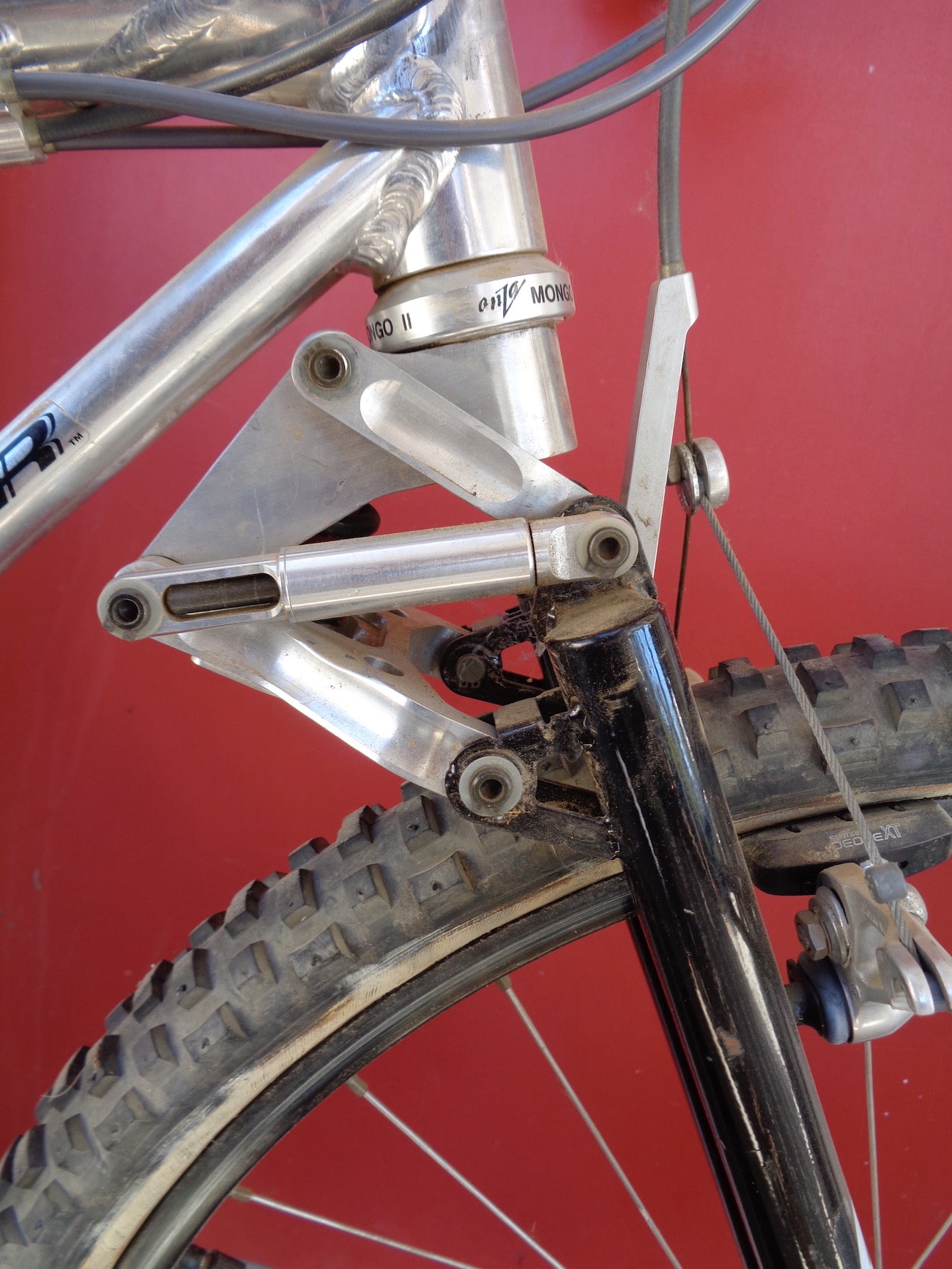FORGOTTEN MOTOCROSS TECH: AMP RESEARCH PARALLELOGRAM-LINK FORK
 Horst was always experimenting and during the R&D period of the Horst fork, he build lots of versions and none were ever the same. This Honda CR500 fork has aluminum fork legs.
Horst was always experimenting and during the R&D period of the Horst fork, he build lots of versions and none were ever the same. This Honda CR500 fork has aluminum fork legs.
Motocross history is filled with examples of creative ideas that were heralded as groundbreaking, but, because of the rapid rate of change in development, sank into the swamp of forgotten technology. Although some are best left abandoned, others were truly innovative (if not ultimately successful). MXA loves to reveal motocross’ tech trivia. Do you remember these ideas? AMP Research’s parallelogram-link fork.
 This CR250 fork was an attempt to use small diameter, thin-wall, chromoly tubing to save weight.
This CR250 fork was an attempt to use small diameter, thin-wall, chromoly tubing to save weight.
Austrian Horst Leitner raced the 500 GPs and ISDTs before committing himself to earning a degree in engineering. That degree allowed him to develop revolutionary ways to reduce chain torque on motocross bikes. Horst created one-off suspension designs for his own race bikes in hopes of discovering a breakthrough in chain torque know-how. Horst’s ambitions led him to emigrate to the United States so he could be at the epicenter of the motorcycle industry.
Once in America, Horst decided that the best way to develop his suspension theories was to build his own motorcycle brand. Horst’s ATK Motorcycles brand was an instant success, and it gave him the freedom to spend more time tinkering with his pet engineering projects; however, the problem for every radical thinker is that the market is resistant to anything different—and all of Horst’s ideas were radically different.

Horst believed in racing as the ultimate test of his designs. He used Gary Jones, Ed Arnet, Jody Weisel and
Joe Waddington as test riders. If the regular test riders expressed concern about the safety of the untested
design, Horst would make his son Harry race it first.
Horst’s prototype parallelogram-link fork merged the ideas of Earles, Greeves and Ribi into one fork design. Horst built many prototypes, often tested by four-time 250 National Champion Gary Jones, but never varied from the geometry that produced Horst’s perfect theoretical wheel arc.
 Horst didn’t let his parallelogram-link motocross experience go to waste. He used it to build his AMP Research BLT mountain bike fork. The mountain bike industry relied on motocross designers during the early years of full suspension mountain bikes. The horizontal tube is the oil-filled damper. The forks damper is a through-shock, in that the shock shaft has seals on both ends (you can see the shock shaft at the back of the damper. The coil spring is tucked up inside the fork struts.
Horst didn’t let his parallelogram-link motocross experience go to waste. He used it to build his AMP Research BLT mountain bike fork. The mountain bike industry relied on motocross designers during the early years of full suspension mountain bikes. The horizontal tube is the oil-filled damper. The forks damper is a through-shock, in that the shock shaft has seals on both ends (you can see the shock shaft at the back of the damper. The coil spring is tucked up inside the fork struts.
Leitner hoped to make the forks an option on his ATK 406 and 604 motocross bikes, but it didn’t happen, because after Horst sold ATK and started AMP Research, he took the motocross fork and turned it into the AMP BLT mountain bike fork. With mountain bikes just entering the suspension era in 1990, there were no preconceived notions of what mountain bike suspension should look like. Horst’s suspension ideas were a big success. How big? Horst was inducted into the Mountain Bike Hall of Fame in 2015.






Comments are closed.